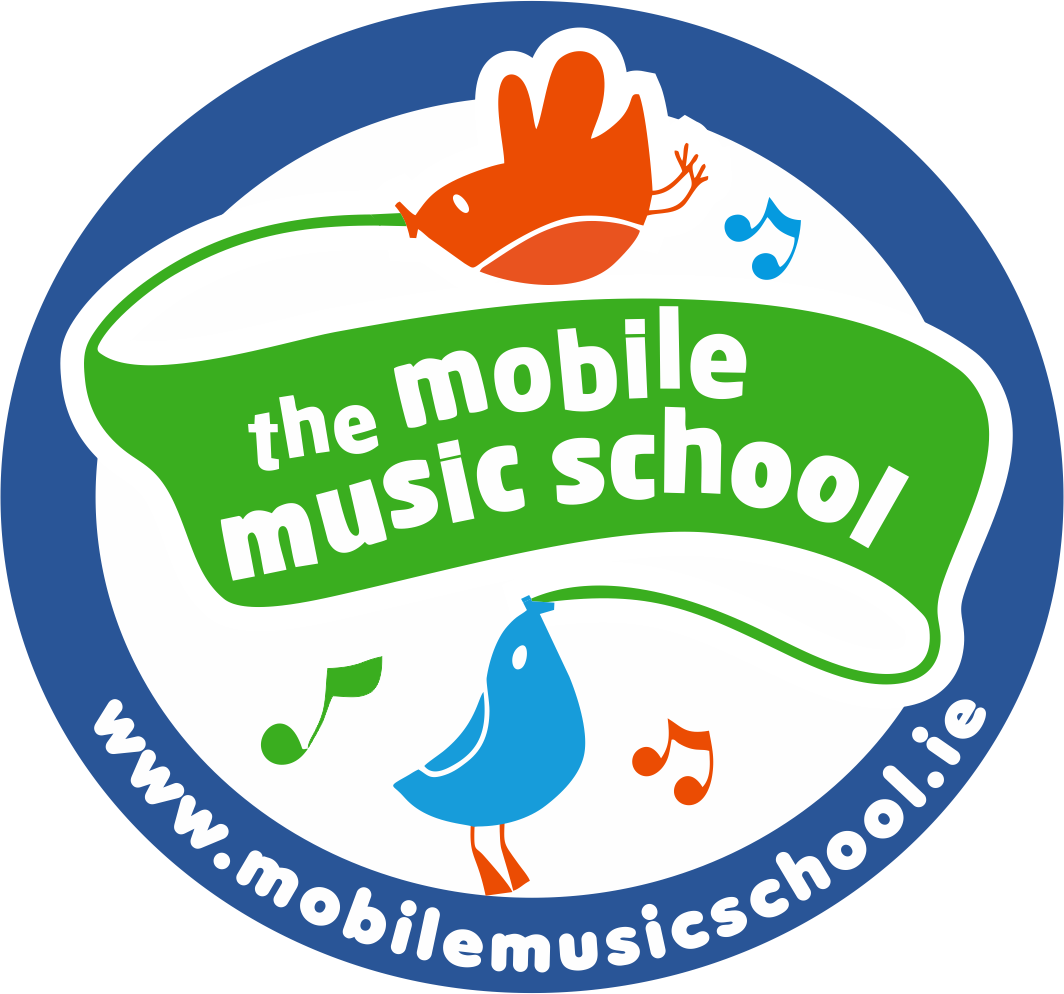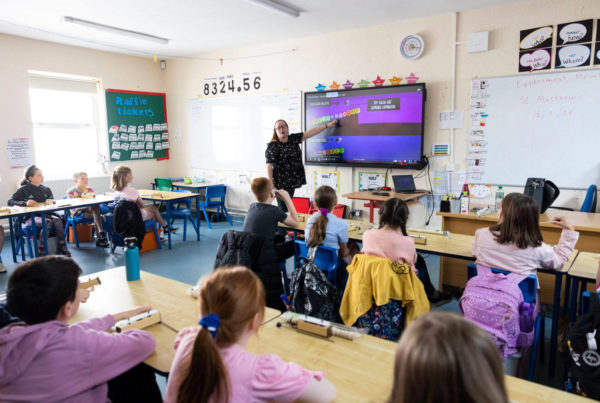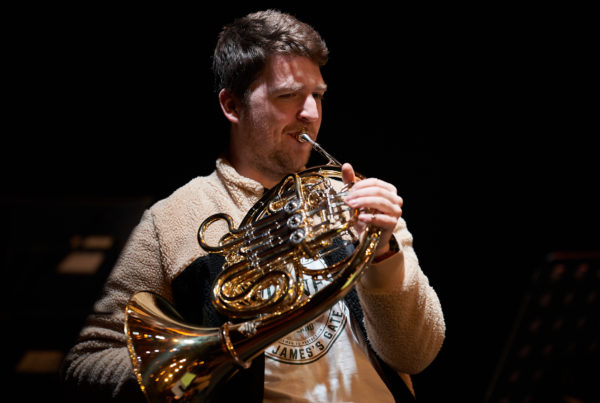Introduction
Music education doesn’t require expensive instruments or specialised training. Some of the most effective musical learning happens through simple, engaging games that any teacher can facilitate.
At The Mobile Music School, we believe quality music education should be accessible to every classroom. That’s why we’re sharing 15 of our favorite music games—tried and tested with over 50,000 students—that you can implement immediately with minimal preparation.
These games develop rhythm, listening skills, creativity, and teamwork while keeping students engaged and having fun.
Rhythm and Beat Games
1. Rhythm Echo
Skills: Rhythm, listening, memory
Materials: None required
The teacher claps a simple rhythm pattern, and students echo it back. Start with 4-beat patterns and gradually increase complexity. Variations include using body percussion (stomps, snaps, pats) or having students take turns being the leader.
2. Pass the Beat
Skills: Steady beat, concentration, teamwork
Materials: None required
Students sit in a circle and establish a steady beat by patting their laps. One student “passes” a clap to their neighbour, who passes it along. The goal is to keep the beat steady as the clap travels around the circle. Add challenge by increasing tempo or passing multiple claps.
3. Freeze Dance with Musical Concepts
Skills: Listening, tempo recognition, body awareness
Materials: Music player
Play music and have students dance. When the music stops, they freeze. Add musical concepts: “Freeze in a high position” (high notes), “Freeze in a low position” (low notes), or “Freeze like you’re playing an instrument.”
4. Body Percussion Composition
Skills: Rhythm creation, notation, performance
Materials: Paper and pencils
Students create simple rhythm patterns using body percussion symbols (clap = hands, stomp = feet, snap = fingers, pat = legs). They notate their composition and perform it for the class. Groups can combine compositions to create longer pieces.
Listening and Pitch Games
5. High-Low Sound Safari
Skills: Pitch recognition, listening
Materials: Xylophone, keyboard, or voice
Play two notes and have students identify which is higher or lower. Students can respond by raising hands high or low, standing or crouching, or moving to different sides of the room. Increase difficulty by making the pitch difference smaller.
6. Musical Statues with Dynamics
Skills: Dynamic awareness, listening, body control
Materials: Music player
Similar to freeze dance, but students move according to the music’s volume. Loud music = big movements, soft music = small movements. This teaches the concept of dynamics (loud and soft) in an active, engaging way.
7. Instrument Sound Detective
Skills: Timbre recognition, listening, memory
Materials: Various classroom instruments or recordings
Students close their eyes while you play an instrument. They identify which instrument made the sound. Advance the game by playing two instruments simultaneously or using recorded orchestral music.
8. Melody Memory
Skills: Melodic memory, pitch matching
Materials: Voice or simple instrument
Sing or play a short melodic phrase (3-5 notes). Students echo it back. Gradually increase the length and complexity. This develops ear training and vocal skills simultaneously.
Movement and Expression Games
9. Musical Emotions
Skills: Expression, interpretation, emotional awareness
Materials: Music player with varied selections
Play different styles of music (happy, sad, energetic, calm) and have students move or create facial expressions that match the mood. Discuss how music conveys emotion and what musical elements create different feelings.
10. Tempo Train
Skills: Tempo awareness, steady beat, cooperation
Materials: Drum or music player
Students form a line holding the shoulders of the person in front (like a train). Play or drum at different tempos, and the train moves accordingly—slow tempo = slow movement, fast tempo = fast movement. Students must work together to maintain the train while matching the tempo.
11. Musical Storytelling
Skills: Creativity, sound effects, narrative skills
Materials: Classroom instruments or body percussion
Read a story and have students create sound effects using instruments or body percussion. For example, drums for thunder, shakers for rain, or wood blocks for footsteps. Students can also create their own stories and add musical elements.
Ensemble and Teamwork Games
12. Rhythm Orchestra
Skills: Ensemble playing, listening, following a conductor
Materials: Various rhythm instruments
Divide students into sections, each with different instruments or body percussion sounds. Designate a conductor who points to sections to play or stop. Students must watch the conductor and play together. Rotate conductors so everyone gets a turn leading.
13. Musical Telephone
Skills: Listening, memory, rhythm
Materials: None required
Like the telephone game, but with rhythm. Students sit in a line. The first student creates a short rhythm pattern and taps it on the next student’s back. That student taps what they felt on the next person’s back, and so on. The last student performs the rhythm aloud, and you compare it to the original.
14. Question and Answer
Skills: Musical conversation, improvisation, creativity
Materials: Instruments or voice
One student plays or sings a short musical “question” (a phrase that sounds incomplete). Another student responds with a musical “answer” (a phrase that sounds complete). This teaches musical phrasing and encourages improvisation in a structured way.
Creative Composition Games
15. Graphic Score Creation
Skills: Notation, creativity, interpretation
Materials: Paper, markers, instruments
Students create visual representations of music using shapes, colors, and lines instead of traditional notation. For example, wavy lines = smooth sounds, jagged lines = sharp sounds, large shapes = loud, small shapes = soft. Students then “perform” their graphic scores using instruments or voice.
Tips for Successful Music Games
- Start Simple: Begin with easier versions and add complexity as students gain confidence
- Model First: Demonstrate the game clearly before students participate
- Encourage Everyone: Create a supportive environment where all contributions are valued
- Adapt as Needed: Modify games to suit your students’ ages, abilities, and interests
- Connect to Learning: Link games to curriculum concepts you’re teaching
- Keep It Fun: The primary goal is engagement and enjoyment—learning follows naturally
Integrating Games into Your Curriculum
These games aren’t just fun activities—they’re powerful educational tools:
- Use as warm-ups to energize students and prepare them for learning
- Incorporate as brain breaks to refresh attention during long lessons
- Include as rewards or Friday afternoon activities
- Integrate into music lessons as skill-building exercises
- Adapt to reinforce concepts from other subject areas (counting, patterns, language)
Want More Resources?
These 15 games are just the beginning. At The Mobile Music School, we provide teachers with extensive free resources, professional development, and ongoing support to make music education accessible and effective.
Our workshops complement classroom music activities with expert instruction, specialised instruments, and curriculum-aligned content that deepens students’ musical understanding.
Ready to enhance your school’s music education program?
Contact The Mobile Music School today:
Phone: 01 892 8058 or 087 422 1422
Email: admin@mobilemusicschool.ie
Address: Unit K14 Drinan Enterprise Centre, Feltrim Road, Swords, Co. Dublin
Let’s make music education engaging, accessible, and fun for every student!




